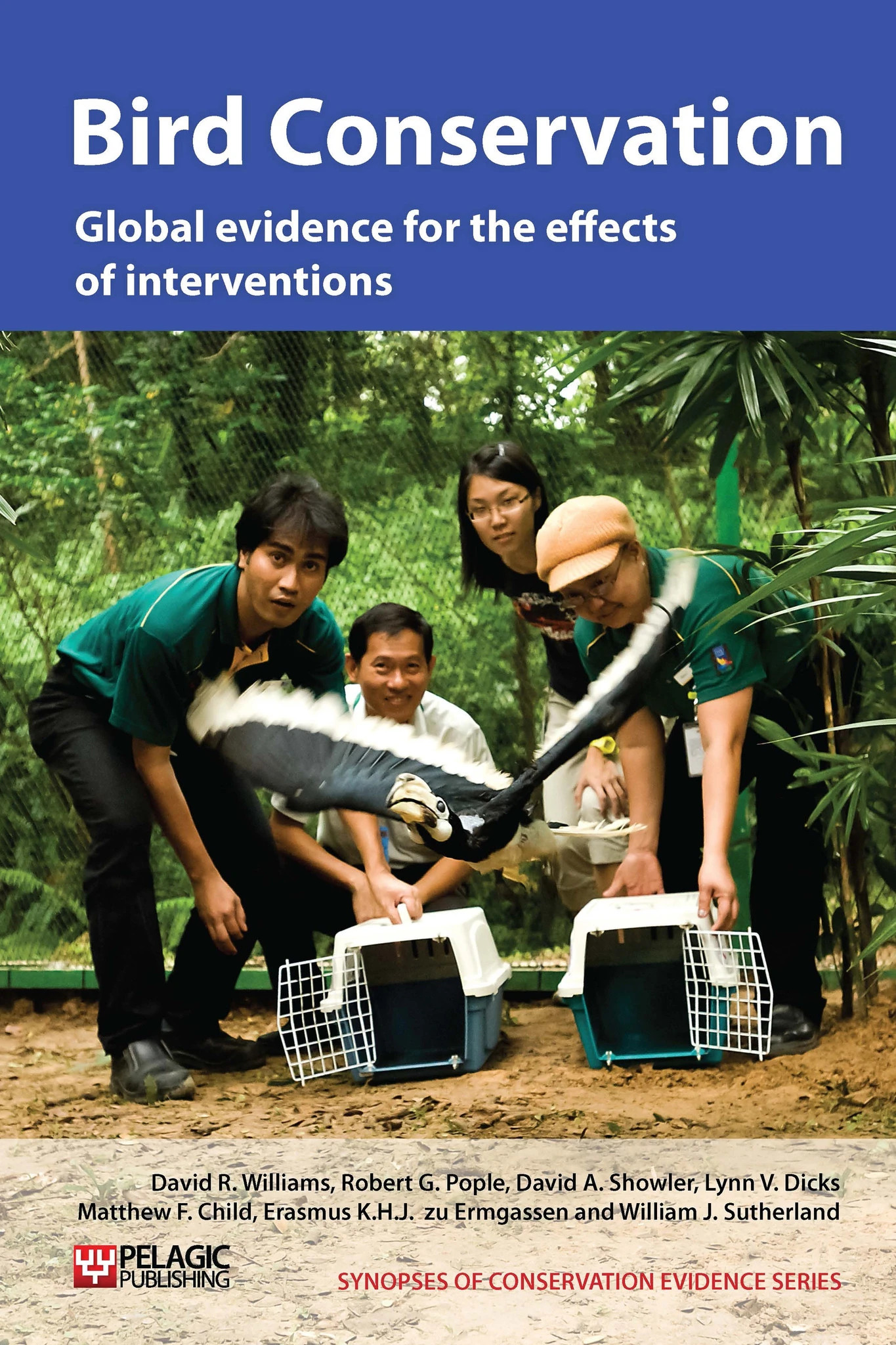Use holding pens at release sites
-
Overall effectiveness category Unknown effectiveness (limited evidence)
-
Number of studies: 6
View assessment score
Hide assessment score
How is the evidence assessed?
-
Effectiveness
51% -
Certainty
36% -
Harms
2%
Study locations
Supporting evidence from individual studies
A replicated study in south-eastern Arizona, USA (Snyder et al. 1994), found that survival in thick-billed parrots Rhynchopsitta pachyrhyncha translocated and released into the Chiricahua Mountains between September 1986 and September 1993 was higher for birds that were released without preparation into the wild, compared to those that were soft-released. This difference held both for all birds (26% of 69 soft release birds alive after two months vs. 48% of 23 ‘standard release’ birds) and for wild-caught birds (37% of 49 soft release birds vs. 63% of 16 standard releases). Soft release involved preconditioning to the local environment and supplying birds with local food while in captivity. This study is discussed in more detail in ‘Release captive-bred individuals’ and ‘Translocate individuals’.
Study and other actions testedA replicated study, reviewing a houbara bustard Chlamydotis undulata macqueenii release programme in southwest Saudi Arabia between 1991 and 1993 (Jaime et al. 1996) found that releases were most successful when subadult birds were released into a large (4 km2) fenced enclosure, compared with releases of birds without an enclosure. All four birds released without an enclosure were killed by foxes within three days, whilst one of 25 birds released into the enclosure survived for at least seven months and ten other established themselves in territories in the release site. Twelve of the dead birds were predated and two contracted pox. Other release techniques and descriptions of the captive-breeding programme are discussed in ‘Use captive breeding to increase or maintain populations’, ‘Use artificial insemination in captive breeding’, ‘Release captive-bred individuals’, ‘Release birds in ‘coveys’ and ‘Use holding pens at site of release and clip birds’ wings’.
Study and other actions testedA replicated, controlled study in 1991-4 in desert steppe in Saudi Arabia (Combreau & Smith 1998) found that the survival of released houbara bustards Chlamydotis undulata macqueenii (released as part of the same programme as in Jaime et al.1996) was significantly higher when birds were released into a release pen, compared to direct release into the reserve (48% survival for 59 sub-adults released in 1992-4 vs. 0% survival for birds released into the reserve or the pen without a ‘transition period’ in 1991). The effect of clipping sub-adults’ wings before release is discussed in ‘Use holding pens and clip birds’ feathers’, with further details of the programme in ‘Release captive bred individuals’, ‘Release birds as sub-adults or adults, not juveniles’ and ‘Control predators not on islands’.
Study and other actions testedA replicated study reviewing a reintroduction programme in two prairie sites in Texas, USA, in 1996-7 (Lockwood et al. 2005) found that six month survival rates of released, captive-bred and hand-reared Attwater’s prairie chickens Tympanuchus cupido attwater (an endangered subspecies of the greater prairie chicken) were higher for birds that spent 14 days in an ‘acclimatisation pen’ (47% of 97 birds alive after six months) compared to birds that spent only three days in the pens (19% of 31 birds alive). Further analysis revealed that this difference was due to increased survival in the first two weeks after release. This study is discussed further in ‘Release captive-bred individuals’.
Study and other actions testedA small study at a mixed grassland site in Saskatchewan, Canada, in the springs of 1997-2000 and 2002 (Poulin et al. 2006), found that released pairs of burrowing owls Athene cunicularia were more likely to form pairs when they were held in release enclosures for five days, or until they began laying, compared with birds only held for three days before the enclosure was removed (all eight pairs remained together when enclosures were kept for five days or until laying vs. 22% of 18 pairs remaining together when enclosures were kept for just three days). This study is also discussed in ‘Release captive bred individuals’ and ‘Foster chicks with wild conspecifics’.
Study and other actions testedA 2007 review of northern bald ibis (waldrapp) Geronticus eremita conservation (Bowden et al. 2007) found that the seasonal use of holding pens, designed to prevent birds from migrating from a release site in Turkey, kept the majority of released individuals in the area, but over 25 years some 200 birds avoided capture and were ‘lost’ from the colony. Previous work had found that migrating birds were unlikely to survive or return. These birds migrated but never returned the following spring. This study is also discussed in ‘Release captive-bred individuals into the wild to restore or augment wild populations’, ‘Use captive breeding to increase or maintain populations’, ‘Artificially incubate and hand-rear birds in captivity’, ‘Release birds as adults or sub-adults, not juveniles’, ‘Clip birds’ wings on release’, ‘Use microlites to help birds migrate’ and ‘Foster birds with non-conspecifics’.
Study and other actions tested
Where has this evidence come from?
List of journals searched by synopsis
All the journals searched for all synopses
This Action forms part of the Action Synopsis:
Bird Conservation
Bird Conservation - Published 2013
Bird Synopsis





)_2023.JPG)














